One startup company is repurposing the gene-editing tool.
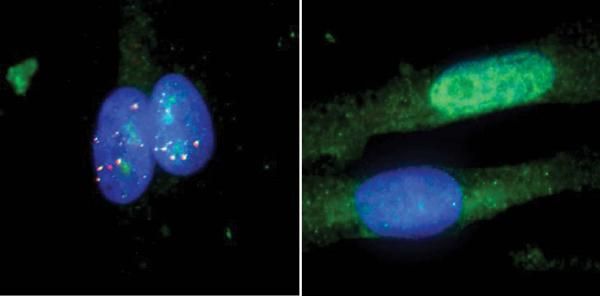

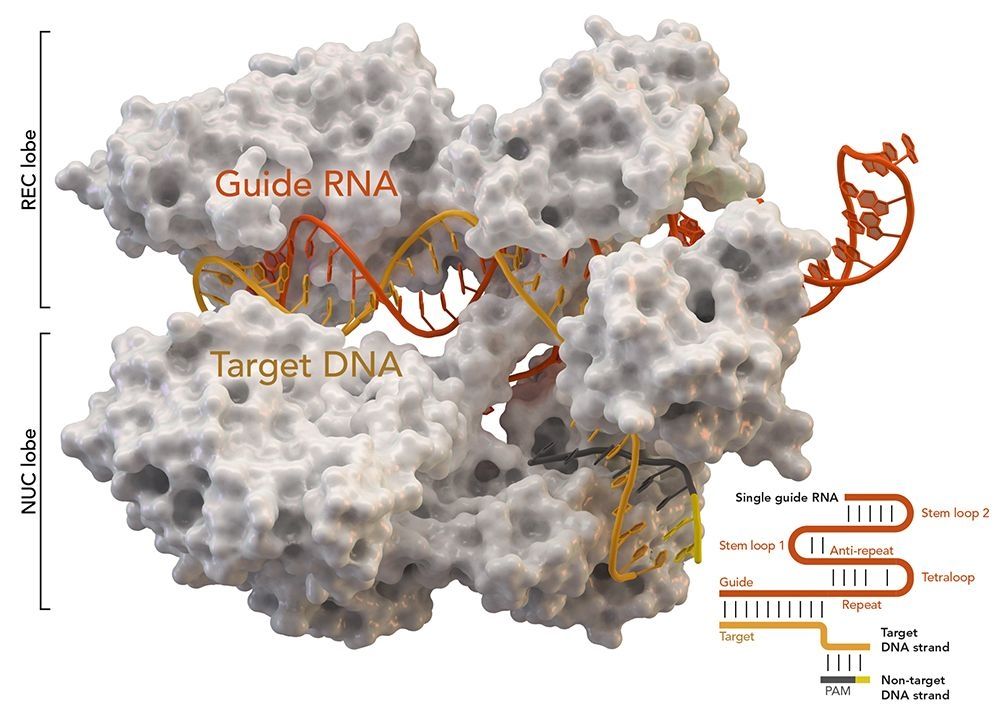
(Phys.org)—A team of researchers from the University of California and the University of Tokyo has found a way to use the CRISPR gene editing technique that does not rely on a virus for delivery. In their paper published in the journal Nature Biomedical Engineering, the group describes the new technique, how well it works and improvements that need to be made to make it a viable gene editing tool.
CRISPR-Cas9 has been in the news a lot lately because it allows researchers to directly edit genes—either disabling unwanted parts or replacing them altogether. But despite many success stories, the technique still suffers from a major deficit that prevents it from being used as a true medical tool—it sometimes makes mistakes. Those mistakes can cause small or big problems for a host depending on what goes wrong. Prior research has suggested that the majority of mistakes are due to delivery problems, which means that a replacement for the virus part of the technique is required. In this new effort, the researchers report that they have discovered just a such a replacement, and it worked so well that it was able to repair a gene mutation in a Duchenne muscular dystrophy mouse model. The team has named the new technique CRISPR-Gold, because a gold nanoparticle was used to deliver the gene editing molecules instead of a virus.
The new package was created by modifying a bit of DNA to cause it to stick to a gold nanoparticle and then a Cas9 protein and also an RNA guide. The package was then coated with a polymer that served as a containment casing—one that also triggered endocytosis (a form of cell transport) and helped the molecules escape endosomes once inside the target cells. The molecules then set to work—the Cas9 cut the target DNA strand, the guide RNA showed what needed to be done and a DNA strand was placed where a mutation had existed. The result was a gene free of a mutation that causes Duchenne muscular dystrophy.
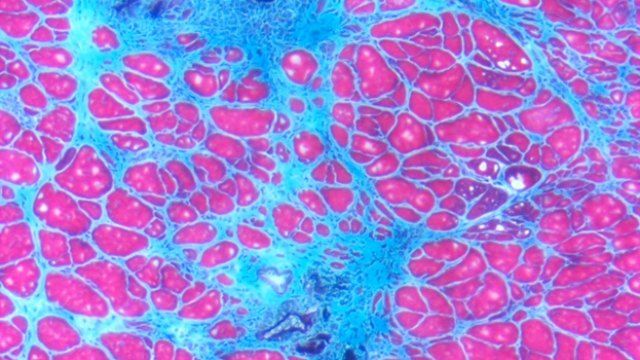
Muscle from a mouse model of Duchenne muscular dystrophy. Fibrous scar tissue is in blue and healthy muscle is in pink. CONBOY LAB AND MURTHY LAB While promising, applications of CRISPR-Cas9 gene editing have so far been limited by the challenges of delivery—namely, how to get all the CRISPR parts to every cell that needs them. In a study published today (October 2) in Nature Biomedical Engineering, researchers have successfully repaired a mutation in the gene for dystrophin in a mouse model of Duchenne muscular dystrophy by injecting a vehicle they call CRISPR-Gold, which contains the Cas9 protein, guide RNA, and donor DNA, all wrapped around a tiny gold ball.
The authors have made “great progress in the gene editing area,” says Tufts University biomedical engineer Qiaobing Xu, who did not participate in the work but penned an accompanying commentary. Because their approach is nonviral, Xu explains, it will minimize the potential off-target effects that result from constant Cas9 activity, which occurs when users deliver the Cas9 template with a viral vector.
Duchenne muscular dystrophy is a degenerative disease of the muscles caused by a lack of the protein dystrophin. In about a third of patients, the gene for dystrophin has small deletions or single base mutations that render it nonfunctional, which makes this gene an excellent candidate for gene editing. Researchers have previously used viral delivery of CRISPR-Cas9 components to delete the mutated exon and achieve clinical improvements in mouse models of the disease.

Leading women’s magazine Marie Claire has a feature story on life extension out this month (approx 1.5 million circulation):
Forget about life after death. More and more, women around the country are seeking another kind of miracle: not dying at all.
What if you could hit the pause button on aging? Live to 120 without feeling a day over 80? More radical still, what if you could cheat death? Would you do it?
“Life extensionists” would. That’s the name modern immortality seekers now go by, and devotees range from those who’d like to live healthier lives into old age to the more extreme, who ardently believe that humans can, and should, overcome death the same way we’ve overcome, say, smallpox or tooth decay.
Life expectancy for women in the United States has risen steadily from 73 in the 1960s to 81 today, with those numbers continuing to increase thanks to a combination of biology and higher standards of living (not to mention the over 1,000 geneticists and biologists working in the longevity field). But life extensionists want more. They want to be cognitively and physically healthy for decades, if not centuries.
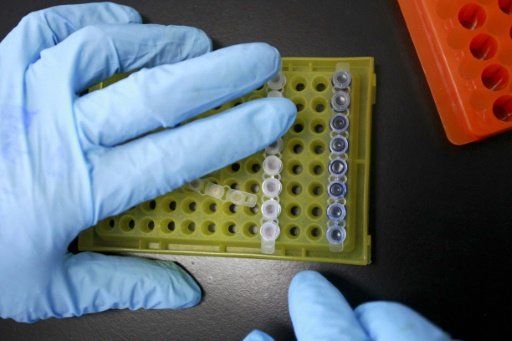
Chinese scientists used an adapted version of a controversial gene-editing technique to correct a disease-causing mutation in human embryos, a medical first cautiously hailed by other experts Thursday.
The team used a so-called “base editor”—an adaptation of the CRISPR-Cas9 DNA snipping tool—to correct a single, mutated “letter” among about three billion in the intricate coding of the human genome.
The targeted mutation can cause humans to be born with beta-Thalassaemia, a potentially fatal genetic blood disorder.
This report on the NAD booster nicotinamide mononucleotide (NMN) will definetly be of interest to Lifeboat members.
NAD is the fountain of youth in mice and is boosted by NMN. This report includes highlights of Aug 2017 interview with Dr. David Sinclair, the researcher who discovered that the anti-aging molecule NAD has rejuvenating effects on mice.
Summary: NMN as a NAD-boosting anti-aging drug. Highlights of the August 2017 interview with David Sinclair, the scientist who discovered that the fountain of youth molecule NAD has remarkable rejuvenating effects on mice. The career of David Sinclair follows a link between sirtuins, resveratrol, NAD-boosting anti-aging compound nicotinamide mononucleotide (NMN), and calorie restriction.
Professor David A. Sinclair, Ph.D. has discovered what may be the fountain of youth. The Australian geneticist with the UNSW School of Medical Sciences and Harvard Medical School reported that by boosting NAD, a naturally-occurring compound found in our bodies, he was able to reverse DNA damage and turn elderly mice into energetic young ones.
That’s all fine and well for mice, but when will clinical trials show that NAD-boosting NMN is safe and effective for us humans?
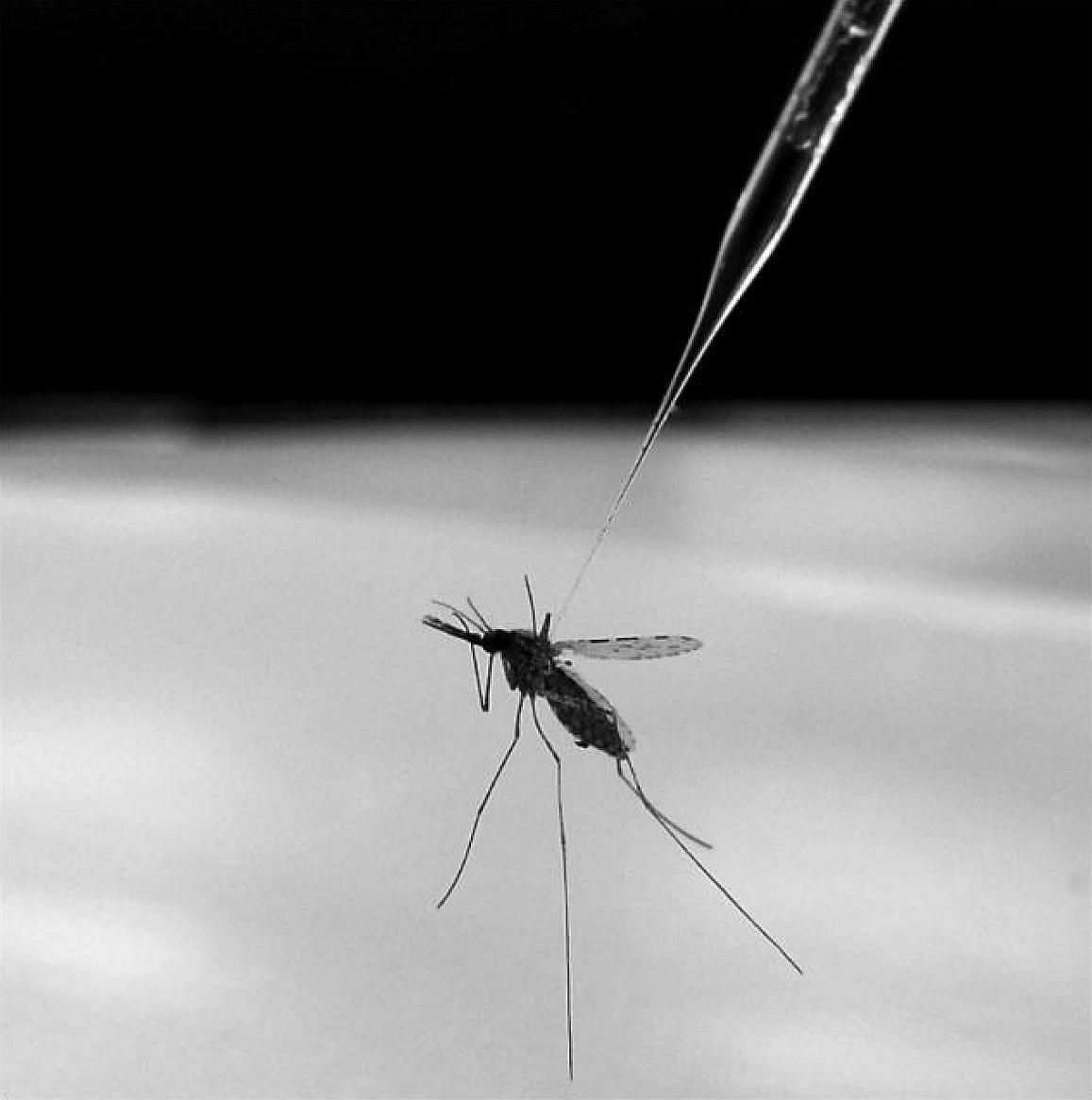
Some glutens are harmful to coeliacs, but others have no effect. A genetically modified wheat lacks only the harmful ones, and can be used to make safer bread.

So far, the only intervention that is known to increase lifespan in multiple species is caloric restriction (CR). Caloric restriction is known to increase lifespan in the majority of mouse strains tested[1]. The effects of CR have even been shown to influence how primates age and reduce the incidence of diabetes, cancer, cardiovascular disease, and brain atrophy[2].
Science has known about the effects of CR since the 1930s, when rat experiments first showed researchers this phenomenon[3]. However, despite the various health benefits of CR, how it delays aging has remained a mystery. A new study suggests that epigenetic drift may be the answer.
We are very pleased to announce that Dr. Robert Shmookler Reis has joined the LEAF scientific advisory board. He studied at Harvard University (B.A.) and Sussex University (D.Phil.). He joined the University of Arkansas for Medical Sciences in 1980, where he holds the Udupa Chair of Gerontologic Research; he also serves as Affiliate Professor of Pathology at the Univ. of Washington in Seattle WA.
Dr. Robert Shmookler Reis is an expert in genetics whose work focuses on the molecular genetics of longevity and age-associated diseases and his team holds the world record for life extension in C. elegans (roundworms) making them live ten times their normal lifespan.